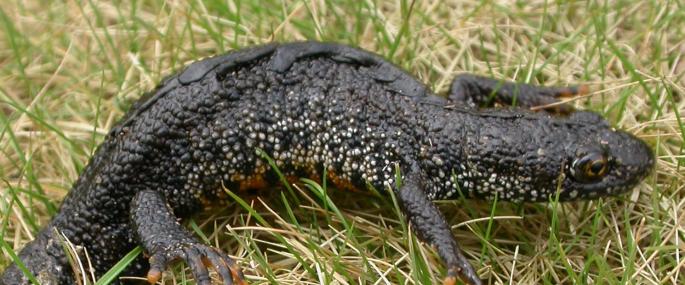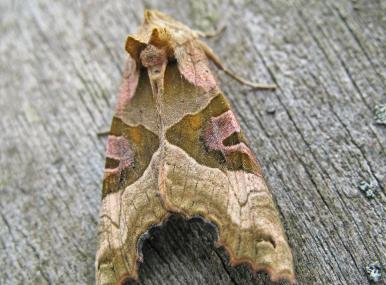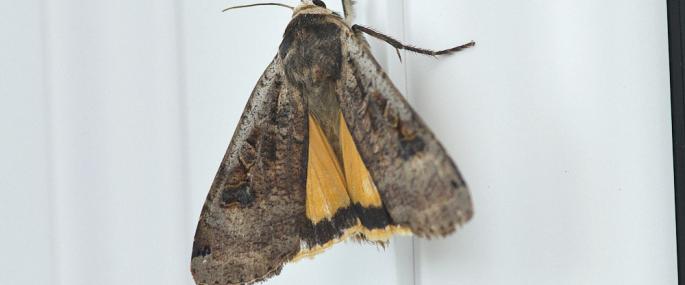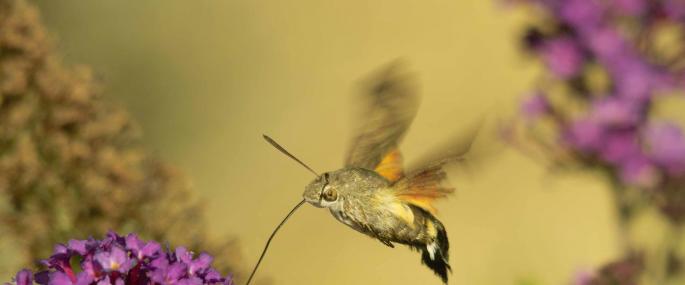Smooth Newt
Newts are amphibians, breeding in ponds during the spring and spending most of the rest of the year feeding on invertebrates in woodland, hedgerows and tussocky grassland. They hibernate underground, amongst tree roots and in old walls. The Smooth Newt is also known as the 'Common Newt', and is the species you are most likely to find in your garden pond.
Human activity, including the drainage of land for agriculture and the loss of ponds through development, has resulted in the disappearance of many wetlands. This has taken its toll on wetland wildlife like newts. The Wildlife Trusts are working closely with planners, developers and farmers to ensure our wetlands are protected. You can help: encourage newts and other amphibians into your garden by having a wildlife-friendly pond and leaving piles of logs for hibernating beneath. In partnership with the RHS, The Wildlife Trusts' Wild About Gardens initiative can help you plan your wildlife garden.
Great Crested Newt
Newts are amphibians, breeding in ponds during the spring and spending most of the rest of the year feeding on invertebrates in woodland, hedgerows and tussocky grassland. They hibernate underground, amongst tree roots and in old walls. The British populations of this rare amphibian are internationally important.
In past times, the Great Crested Newt would have lived in natural wetlands across Britain. But human activity, including the drainage of land for agriculture and the loss of ponds through development, has resulted in the disappearance of many wetlands. This has taken its toll on wetland wildlife like newts. Being particularly partial to lowland farmland and old quarries, The Wildlife Trusts are working closely with planners, developers and farmers to ensure this 'Warty Newt' is looked after. If you know of a pond that might have Great Crested Newts in it, contact your local Trust to ensure it's recorded and protected.

Angle Shades
The Angle Shades is a medium-sized moth, generally seen on the wing from May to October as the result of two broods. The caterpillars are stout and green or brownish, with faint stripes on every segment. Larvae that hatch in autumn overwinter as caterpillars and pupate in the soil the following spring to produce the first generation of adults that year. The caterpillars feed on a wide range of plants including Dock and Stinging Nettles. This moth is quite common in parks and gardens, as well as woodland edges, scrub and hedgerows.
Moths such as the Angle Shades are common in gardens - why not set up a moth trap at night and see who comes to visit? To attract moths and butterflies into your garden, plant nectar-rich borders and shrubs for them to feed on, and leave patches of nettles and docks for the caterpillars. To find out more about encouraging wildlife into your garden, visit our Wild About Gardens website: a joint initiative with the RHS, there's plenty of facts and tips to get you started.

Silver Y
The Silver Y is a medium-sized moth that can be seen on warm days throughout the year, although it is most common during the late summer. The caterpillars feed on a wide variety of plants, including Stinging Nettles, clover and cabbages.
Moths such as the Silver Y are common visitors to gardens and can be a joy to watch. To attract moths and butterflies into your garden, plant nectar-rich borders and shrubs for them to feed on, and leave patches of nettles and docks for the caterpillars.
To find out more about encouraging wildlife into your garden, visit our Wild About Gardens website: a joint initiative with the RHS, there's plenty of facts and tips to get you started.

Large Yellow Underwing
The Large Yellow Underwing is a very common, large, brown moth, with orangey-yellow hindwings bordered with black. It holds its wings folded back, flat along the body, and scuttles about on the floor like a mouse. Adults fly from June right through to November, and often come to lights at night. They rest during the day, but will flash their bright hindwings if disturbed, designed to surprise and scare-off predators. The caterpillars feed on a wide range of plants, including grasses and Dock leaves, and hibernate over winter. It is found almost everywhere.
Moths such as the Large Yellow Underwing are common in gardens - why not set up a moth trap at night and see who comes to visit? To attract moths and butterflies into your garden, plant nectar-rich borders and shrubs for them to feed on. To find out more about encouraging wildlife into your garden, visit our Wild About Gardens website: a joint initiative with the RHS, there's plenty of facts and tips to get you started.

Cinnabar
Numbers of Cinnabar Moths are reported to have fallen by 83% in the last 35 years, possibly due to the eradication of poisonous ragwort in livestock fields. The Wildlife Trusts are working closely with farmers and landowners to promote wildlife-friendly practices. You can help too: plant nectar-rich borders and shrubs to attract moths and butterflies into your garden, and leave that patch of ragwort alone! To find out more about encouraging wildlife into your garden, visit our Wild About Gardens website: a joint initiative with the RHS, there's plenty of facts and tips to get you started.
Garden Tiger
A large, brightly coloured moth, the Garden Tiger Moth is on the wing towards the end of the summer, during July and August. It is a night-flying moth of scrub-covered sand dunes, woodland edge, wet meadows, parks and gardens. The striking caterpillars are large, black and covered in long, dense, black and ginger hairs: they are commonly called 'Woolly Bears'. They feed on Stinging Nettles, Dock leaves and many garden plants.
Once a very common moth, the Garden Tiger has suffered serious declines in recent years, possibly as a result of changes in the climate, and is now only really common around the coast. The Wildlife Trusts manage many nature reserves for the benefit of all kinds of moths and butterflies, including the Garden Tiger. You can help too: plant nectar-rich borders and shrubs and leave patches of nettles to attract moths and butterflies into your garden. To find out more about encouraging wildlife into your garden, visit our Wild About Gardens website: a joint initiative with the RHS, there's plenty of facts and tips to get you started.

Buff-tip
The Buff-tip is a medium-sized moth that is on the wing at night from June to July. It is quite a common moth in parks and gardens, as well as woodland edges, scrub and hedgerows. The caterpillars are striking: large, hairy and yellow, with a black head and a ring of short black stripes on every segment. They often gather together in large numbers, eating the leaves of lime, birch, Hazel and willow trees, sometimes defoliating whole branches, but rarely causing serious damage. This moth pupates on the ground and overwinters as a chrysalis.
Moths such as the Buff-tip are common in gardens - why not set up a moth trap at night and see who comes to visit? To attract moths and butterflies into your garden, plant nectar-rich borders and shrubs for them to feed on. To find out more about encouraging wildlife into your garden, visit our Wild About Gardens website: a joint initiative with the RHS, there's plenty of facts and tips to get you started.

Elephant Hawk-moth
Moths such as the Elephant Hawk-moth are common in gardens - why not set up a moth trap at night and see who comes to visit? To attract moths and butterflies into your garden, plant nectar-rich borders and shrubs for them to feed on. To find out more about encouraging wildlife into your garden, visit our Wild About Gardens website: a joint initiative with the RHS, there's plenty of facts and tips to get you started.
Hummingbird Hawk-moth
The hummingbird hawk-moth is a small, day-flying hawk-moth. Hummingbird hawk-moths are summer visitors, migrating here from Southern Europe in variable numbers each year. In some years, they can be common and may frequently be seen in gardens hovering like hummingbirds to feed on the nectar of honeysuckle, red valerian and many other flowers. They can also be found in woodland edge, heath and shrubby habitats. The caterpillar feeds on various species of bedstraw, so the female adult moth lays her eggs on the buds or flowers of these plants.
Moths such as the Hummingbird Hawk-moth are common visitors to gardens and can be a joy to watch. To attract moths and butterflies into your garden, plant nectar-rich borders and shrubs for them to feed on. To find out more about encouraging wildlife into your garden, visit our Wild About Gardens website: a joint initiative with the RHS, there's plenty of facts and tips to get you started.
